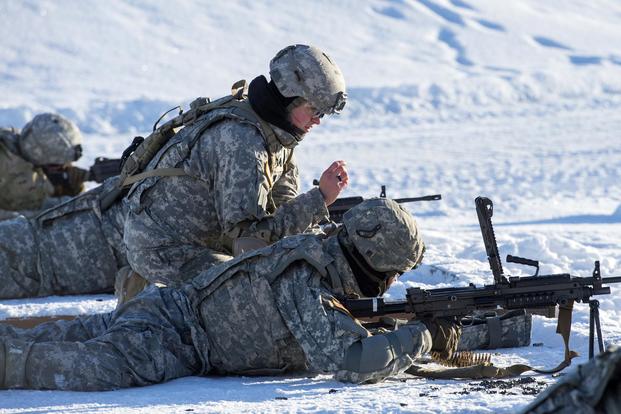Textron is gambling that its 14 years of work on case-telescoped weapons research will satisfy the U.S. Army's ambitious requirements for an M249 squad automatic weapon replacement.
The service recently awarded Textron and five other gunmakers a contract to build prototype weapons for its Next Generation Squad Automatic Rifle program.
The contract awards are the result of a Prototype Opportunity Notice the Army released in March in an effort to develop a futuristic replacement for the three-decade-old M249. The Next Generation Squad Automatic Rifle, or NGSAR, is one of the Army's primary efforts under its soldier lethality modernization priority.
"The NGSAR will address operational needs identified in various capability-based assessments and numerous after action reports," according to the PON solicitation document.
"It will combine the firepower and range of a machine gun with the precision and ergonomics of a rifle, yielding capability improvements in accuracy, range, and lethality," the document continues. "The weapon will be lightweight and fire lightweight ammunition, improving soldier mobility, survivability, and firing accuracy."
Wayne Prender, vice president of Applied Technologies & Advanced Programs at Textron Systems, talked to Military.com about his firm's approach to the prototype effort.
"We are leveraging and building upon our lineage of lightweight squad weapon technologies that we have been working on over the last 14 years," he said.
Textron was notified in late June of the contract award to deliver one prototype weapon, one fire control system and 2,000 rounds of ammunition within 12 months, Prender said.
Military.com has asked the Army to identify the other five companies that were awarded contracts, but the service did not have an answer by press time.
The Army intends to evaluate the prototypes in an attempt to refine the requirements for the NGSAR.
"It was disclosed at industry day: The result of this prototype opportunity will be yet another full and open competition," Prender said.
The Army wants the prototype weapons -- including sling, bipod and suppressor -- to weigh no more than 12 pounds and have a maximum length of 35 inches, according to the PON document.
The weapon must have a sustained rate of fire of 60 rounds per minute for 15 minutes without requiring a barrel change, the document states.
Under the weapon controllability requirement, a soldier "firing standing with optic at a 50-meter E-Type silhouette given 3 to 5 round burst must be able to engage in 2-4 seconds placing two rounds 70 percent of the time on target," it adds.
The Army also wants ammunition to weigh 20 percent less than the current brass-cased ammo, the document states.
This is where Textron has invested a large amount of research into its case-telescoped ammunition technology. The futuristic cartridges -- featuring a plastic case rather than a brass one to hold the propellant and the projectile, like a conventional shotgun shell -- offer significant weight reductions compared to conventional ammo.
Textron has developed light and medium machine guns that fire 5.56mm and 7.62mm case-telescoped ammunition under the Lightweight Small Arms Technology program, an effort the Army has invested millions of research dollars into over the last decade.
Last year, the company unveiled its new Intermediate Case-Telescoped Carbine, chambered for 6.5mm.
Despite Textron's experience in this arena, Prender admits it will not be easy to deliver what the Army wants.
"They have some pretty aggressive goals with respect to lethality and weight and size and some other performance characteristics," he said. "All of those things individually may be relatively easy but, when you start stacking them all together, that is really where it becomes complex and you need a new design."
Prender would not give specifics about the prototype Textron is submitting, but said "we are taking lessons from all of our case-telescoped projects to include the 5.56mm, 7.62mm and the intermediate caliber -- all that information is informing this new design."
"There is not an easy button here. Certainly, we think our case-telescoped solution is an ideal one to meet these requirements ... but there is development that is necessary over and above what we have done to date," he added.
-- Matthew Cox can be reached at matthew.cox@military.com.











